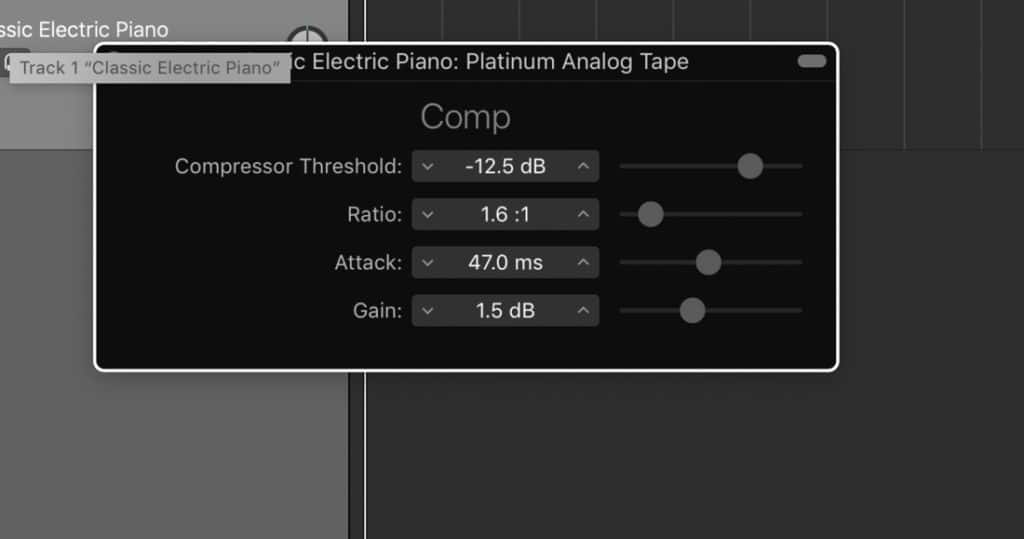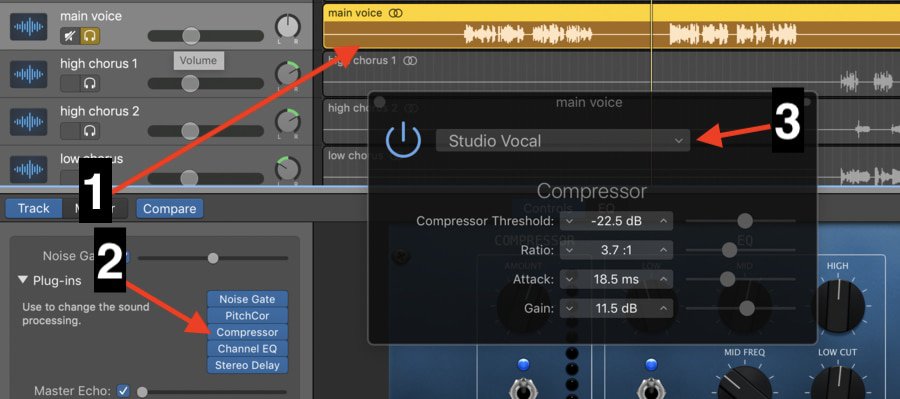

Reducing background noise also makes your podcast sound professional. Reducing background sounds improves the quality of any podcast. Why Do You Need To Reduce The Background Sound? A woman recording a podcast. This is why beginners must use some tools such as Noise Gate to adjust the quality of their work. While others, especially the small and growing podcasters, work with what they have. Some podcasters use very high-end studios to record their work.

It doesn’t necessarily mean that all podcasts are created in the same way. Any topic, any niche is readily available. For any of your interests, be very assured you will find a podcast discussing what you are looking for. Podcasts have grown, especially in the 21 st century.
#GARAGEBAND RECORDING SETTING TONE COMPRESSOR HOW TO#
If you have issues making that work then you can do what I did, just create the whole drum part and record it as a full song, and then use some kind of Time Correction Editor to change the time length of the drum file so it matches the song (this usually requires some experimentation, but it is not that hard).Conclusion How To Eliminate Unwanted Background Noise Manually?īefore you learn how to eliminate background noise manually, you need to know some of the reasons why reducing background noise is necessary. IF that is the issue you can try using the Cakewalk midi as the master clock and make the drum machine the slave. The problems arise if you want to use something like a drum machine that has its own clock - because it might not sync up even though you set it to the same BPM. If you do a project this way - then like I said in ideal conditions you should be able to use that click to create a drum part (especially if a real drummer can hear that original click). That is different from synchronizing two devices. It should have a couple of open bars before the music starts, and it should be on a separate track. Then when you start the master the slave follows.Įd is right - as long as someone records a click track first you can transfer that to all future recording devices and just use the original click for reference. Setting clocking options in midi is actually easy - you just decide (and set in the menu) which one is the master and connect the midi cables. The only real way to sync two projects is to use midi and make one (Garageband) the clock and the other (Cakewalk) the slave (that's for real time). (I never could find a BPM to use that synced to his click). I had to write all the parts and "print" them to protools and then use the time expander to make my drum parts fit his playing. I just did a drum machine track for a friend of mine who recorded a song to a click, and his stated BPM was not the same as my drum machine.

Hopefully, one is a click and you can just play to his click.

If he can send you a sound file with a rhythm guitar on the left and a click on the right, another option is to just take the Garageband. Now - there is always a chance you will get lucky and if he records a song to a click that your own clock will be the same, I just know from experience it is not guaranteed. In theory two devices set to the same BPM should work together, but they don't always work.


 0 kommentar(er)
0 kommentar(er)
